The
Small
Price
of
Survival
Professor Douglas Casa ’97 Ph.D. and the staff of UConn’s Korey Stringer Institute are working to prevent high school athletes from dying. Here’s what they want every parent — and coach — to know.
By Colin Poitras ’85 (CLAS)
Photos by Peter Morenus
The
Small
Price
of
Survival
Professor Douglas Casa ’97 Ph.D. and the staff of UConn’s Korey Stringer Institute are working to prevent high school athletes from dying. Here’s what they want every parent — and coach — to know.
By Colin Poitras ’85 (CLAS)
Photos by Peter Morenus
AUGUST 11, 2010
Lamar High School
Lamar, ARK.
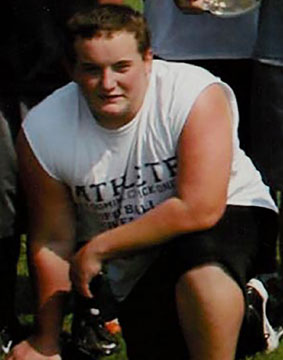
Tyler Davenport
Today is hotter even than most August days in the Little Rock area, with a heat index above 110. Yet football practice goes on as scheduled at Lamar High School, where 16-year-old Tyler Davenport is grinding through conditioning drills in a helmet, shoulder pads, and shorts.
As practice draws to a close, the offensive lineman collapses. His eyes roll back in his head and he begins to moan. Staff cover Tyler’s body with cold towels as he lies on the field in the scorching sun. Ten minutes pass before medics arrive. Tyler’s core body temperature is 108 degrees. An exertional heat stroke is destroying his kidneys. His pancreas and liver are swelling and shutting down.
At Arkansas Children’s Hospital, doctors place Tyler in a medically induced coma and tell his parents that he has a 10 percent chance of living through the night.
AUGUST 13, 2010
Pulaski Academy
Little Rock, ARK.
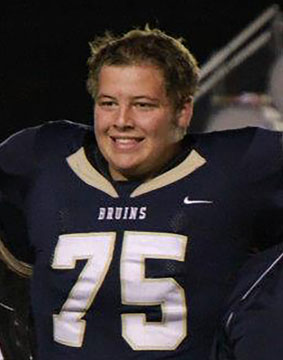
Will James
Two days later and 92 miles away Will James, a 16-year-old, 250-pound offensive lineman, collapses during football practice at Pulaski Academy in Little Rock. The heat index is 112 degrees. A certified athletic trainer on site quickly recognizes heat stroke and carts an unconscious Will off the field to the nearest locker room. The trainer packs ice around Will’s body and sits him under a cold shower. Despite his efforts, Will’s kidneys and liver are failing.
He is transported to Arkansas Children’s Hospital and placed in a medically induced coma. Tyler Davenport is in the room directly across the hall.
AUGUST 13, 2010
Crowley’s Ridge Academy
Paragould, ARK.
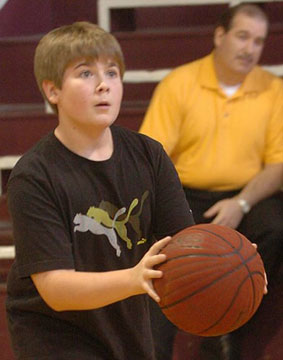
Logan Johnson
That same day, two and a half hours away in Paragould, Logan Johnson is excited to be at his first junior high school basketball practice. The 12-year-old has made sure to drink plenty of water before heading out to practice. There is no air conditioning in the school gym and the outside heat has exceeded 100 degrees.
Logan does okay during the first few sets of sprints, but he feels dizzy and falls while running up and down the bleachers as part of a conditioning drill. He falls again in a running drill around the basketball court. When he sits down to rest, his vision is so blurry he can’t see the hoop at the other end of the court.
A short time later, Logan, who loves basketball and really wants to join the team, tells his coaches he isn’t feeling well and leaves the gym to get a drink of water. He collapses near the school’s cafeteria, where his grandmother happens to be working. She and other lunchroom staff see that Logan is badly overheated and cover him in trash bags filled with ice.
Logan recovers enough to go home. But for the next few days, he battles the fierce repercussions of his exertional heat stroke and makes several trips to a local hospital. He is vomiting, dehydrated, and in pain. Doctors flush his body with five IV bags of fluid to keep him hydrated, but that causes problems with his breathing and puts stress on his kidneys, which are shutting down.
Two days after that first junior high basketball practice, Logan is airlifted to Arkansas Children’s Hospital, where he joins Tyler and Will in the fight to stay alive.
OCTOBER 13, 2015
Loganville Christian Academy
Walton County, GA
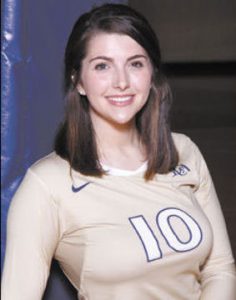
Claire Crawford
Claire Crawford, a 17-year-old senior, drops to the floor in the middle of a volleyball game. A video camera that was set on a tripod by her parents to record this Senior Night game captures Claire serving the ball, grabbing her chest, then collapsing.
Luckily, the school has an automatic external defibrillator, or AED, stored a short distance away. On the video, you see staff, including the school’s athletic trainer, call 911, grab the AED, and immediately turn on the monitor as all color drains from Claire’s face. She has no pulse. A staff member starts CPR. It has been nearly two minutes and 11 seconds since Claire hit the floor when, following the AED’s prompts, the team applies an electric shock. Claire’s heart starts beating again. By the time paramedics arrive, she is sitting up and talking.
“Without the AED there is no way I would’ve made it, and the ambulance wouldn’t have gotten there on time,” Claire tells WSBTV, a local television news station, afterward. Doctors later determine Claire suffered a life-threatening ventricular fibrillation in her heart that requires triple bypass surgery to correct.
Loganville Christian Academy has four wall-mounted AEDs and two portable versions that travel with athletic teams. Doug Casa wishes more schools would follow suit.
“The data is overwhelming,” says Douglas Casa, professor of kinesiology and director of UConn's Korey Stringer Institute (KSI). “Ninety percent of high school athletes will survive a sudden cardiac arrest in sport if an AED is available within a minute or two of when the event occurs.”
Each minute that administration of an AED is delayed, an individual’s chance of survival drops by 10 percent. If it takes five minutes to locate and activate an AED, an individual’s survival rate has already decreased by half.
Nearly 70 percent of all cases of sudden cardiac arrest happen in three sports – football, basketball, and soccer. Nineteen states have adopted most of the recommended actions for sudden cardiac arrest. No state has adopted them all.
AED: $1,000
June 30, 2015
Pine Tree High School
Longview, Texas
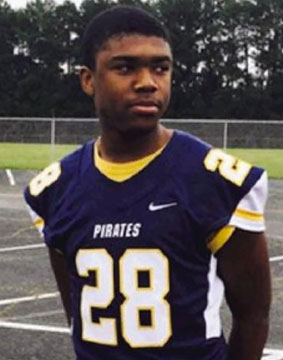
Joshua Warren
Joshua Warren’s football teammates are baffled when the 16-year-old defensive end falls seriously ill after participating in strength and conditioning drills one afternoon in late June.
Joshua’s condition worsens at home. He is admitted for observation at a local hospital, where he dies the following morning. Health officials later determine Joshua’s death was caused by exertional sickling, a life-threatening condition that can occur in athletes who carry the sickle cell trait.
School officials and Joshua’s family say they were unaware that Joshua possessed the sickle cell trait.
Sickle cell is a hereditary condition that causes a person’s normally round red blood cells to stiffen and become crescent- or sickle-shaped. These sickle-shaped cells can stick to the walls of blood vessels causing a dangerous blockage that restricts blood flow and limits the amount of oxygen reaching nearby tissues.
Exertional sickling often occurs when athletes carrying the trait participate in high-intensity exercise with short recovery times between sessions. Athletes who get very dehydrated or who exercise when it is especially hot and humid increase their risk.
In response to an exertional sickling death, the NCAA enacted a policy in 2010 requiring all of its Division I institutions to document sickle cell trait testing for all of their athletes.
From 2000 to 2010, there were 10 exertional sickling deaths among NCAA schools. In the six years since the new policy was passed, there has been just one death due to exertional sickling.
KSI recommends that high schools across the country take similar steps to ensure that coaches and school officials are aware when one of their athletes has sickle cell trait and that those coaches and athletes are counseled about appropriate precautions. Unfortunately, many high schools across the country don’t fully appreciate the dangers presented by exertional sickling until a serious crisis occurs, Casa says.
“Today, everyone is tested for sickle cell trait at birth, so it is mainly a matter of schools getting access to that information through an athlete’s pediatrician during their pre-participation exam,” says Casa. “It really just needs to be on the form.”
Sickle Cell Trait Test and Communication of Results: $0
May 23, 2009
Santa Fe Christian High School
Solana Beach, CALIF.

Tommy Mallon
There are two minutes left in a lacrosse playoff game when 18-year-old Santa Fe Christian defenseman Tommy Mallon, racing full-speed after a ground ball, collides with a Poway High School player. The hit doesn’t look that bad from the sidelines, but Mallon falls to his knees and grabs his head.
His school’s athletic trainer knows something is wrong when Mallon says he can’t feel the back of his head. She stabilizes his head and neck and calls for an ambulance and backboard, insisting — despite Tommy’s repeated requests that he is fine and can get up — that he stay down and not move.
On the way to Scripps Memorial Hospital in La Jolla, Mallon starts vomiting. Tests soon reveal that Mallon has not only suffered a serious concussion, but he has broken his neck. The injury is critical — it’s the C-1 vertebra, where skull and spine connect.
Doctors tell Mallon that if he had gotten up from the field that day he probably would have died or been paralyzed from the neck down. In response to the incident, Mallon and his mother, Beth, who witnessed the collision, created a national foundation, Advocates for Injured Athletes (A41A), that urges high schools to hire certified athletic trainers to keep athletes safe.
“There are so many things on that day that went right that could’ve gone wrong,” Beth Mallon told ESPN in an interview in 2011. “All I kept thinking about was, what does somebody do who doesn’t have all of these resources? I felt like I couldn’t sit back and not try to change things.”
Besides joining the call for more athletic trainers at high schools, KSI supports the policies of organizations like A41A and Heads Up Football, with its comprehensive program developed by USA Football to reduce head, neck, and body injuries and to enhance the overall safety of young athletes.
Research has shown that reducing incidents of head-to-head tackling during competition and in practice can significantly reduce incidents of concussion. KSI endorses Heads Up Football guidelines as the minimum recommended practices for protecting against concussion and body injuries.
Certified Athletic Trainer: $250/day
“EXERTIONAL HEAT STROKE IS ALMOST ALWAYS PREVENTABLE, AND IT IS 100 PERCENT SURVIVABLE IF APPROPRIATE TREATMENT BEGINS IMMEDIATELY.”
COOL FIRST. TRANSPORT SECOND.
If there is a single overriding mantra steeped into the minds of every staff member of the Korey Stringer Institute, it is “Cool first. Transport second.”
At first glance the advice may seem counterintuitive, holding back transportation to a hospital in a medical emergency. But rapid cooling through immediate immersion in an ice-water bath is the most effective way of treating heat stroke, says Casa, who has successfully treated more than 200 heat stroke victims at races and other events over the years.
“How you respond in the first 10 minutes of a catastrophic incident is often the difference between life and death,” Casa says.
The KSI recommends having large plastic immersion tubs filled with ice water at all high school practices and sporting events when it is hot. Using a rectal thermometer to get an accurate core body temperature and assessing the environmental strain by using the wet bulb globe temperature is also important. A wet bulb globe thermometer captures air temperature, humidity, sun angle, and wind speed, factors that can influence the body’s ability to cool itself. Not wearing full game gear, allowing proper rest and hydration periods, and limiting aggressive two-a-day and three-a-day practices during early summer to give athletes time to adjust is critical too. Despite resistance fueled by longstanding local traditions, Casa says there is mounting evidence that these heat acclimatization guidelines work.
In the two years after the incidents involving Will, Tyler, and Logan, Arkansas officials adopted new laws requiring all public high schools to have emergency action plans for serious athlete illness or injury, automatic external defibrillators on-site, and additional medical training for coaching staff. Arkansas was one of the first states, in 2012, to adopt KSI’s recommended heat acclimatization guidelines, and is now considered a national leader in protecting high school athletes on the practice field.
Seventeen states currently follow all of KSI and the task force’s recommended heat-acclimatization policies (see “Road Map” at right). New Jersey was the first to adopt those guidelines, in 2011, and since then, no high school football players have died of heat stroke during preseason practice in any of the 17 states that were properly following the guidelines. At least three high school students died of complications from exertional heat stroke last year — in states that are not following the guidelines.
“WHATEVER IT TAKES”
Casa and his team of colleagues at the Korey Stringer Institute have been spreading messages of survival across the country for the past six years. There are more than 7.5 million high school athletes competing in the U.S., and of that total 1.1 million play football. That’s compared to about 100,000 college and professional athletes playing the game. It may not be surprising, then, that the secondary school population leads the nation in sports-related deaths. And yet, currently only about half of U.S. high schools have a full-time athletic trainer.
Early on in his career (Casa has been at UConn since 1999), he and UConn Kinesiology Professor Lawrence Armstrong, also an expert on hydration, guided the NCAA in making sweeping changes to its practice protocols to protect athletes. Before the new heat-acclimatization policies were put into place, on average one to two NCAA student athletes died each August from heat stroke. Since the changes were adopted, in 2003, there have been only two heat-related deaths in August in colleges that have properly followed the guidelines.
“One simple policy change has saved 15 to 20 lives,” says Casa.
The NFL adopted similar changes in 2011.
But convincing high schools to accept the changes is an entirely different battle.
“The NFL and NCAA have the authority within their organizations to adopt sweeping changes,” explains Casa. “But at the high school level, those changes can only be made by the individual high school athletic associations in each state. It’s a grueling process.”
One state at a time — through phone calls, conferences, board meetings, and, yes, even small gatherings in backyards — the KSI team is convincing state leaders to adopt new policies to better protect high school students from heat stroke, sudden cardiac arrest, exertional sickling in athletes with the sickle cell trait, and head and body trauma — the leading causes of sudden death in sport.
“KSI is a grassroots organization,” Casa says of the national campaign. “We don’t simply preach from a podium. We’re doing whatever it takes to bring about change.”

A ROAD MAP FOR SAVING LIVES
For the past two years, the Korey Stringer Institute (KSI) at UConn and its peer organizations — the National Athletic Trainers’ Association and the American Medical Society for Sports Medicine — have sponsored a national conference called Collaborative Solutions for Safety in Sport.
The meeting brings together officials from every state, including one representative from the state high school athletic association and one rep from the sports medicine advisory committee. At the meeting, school leaders are encouraged to adopt a comprehensive series of best-practice recommendations for secondary school athletics that were issued by a national task force in 2013. Those recommendations, which Doug Casa and KSI helped create, cover all forms of sudden death in sport.
The recommendations call for schools to have at least one certified athletic trainer on-site during all games and practices. Coaching staff should be trained in CPR, the use of automatic external defibrillators, concussion assessment, and how to recognize other life-threatening situations. Detailed emergency action plans must be developed, regularly updated, and practiced at least once annually. Well-supervised and climate-appropriate conditioning drills are a necessity.
“We’re on a great trajectory with what we’ve been able to accomplish in states like Georgia, Texas, Arkansas, and Florida, among others,” says Casa. “It’s exciting, but also disheartening at times because some people won’t do things that you know could help. A lot of times they just need assistance seeing the path forward, and that’s where we come in. We’ve already helped so many states do this, we can help shape the path for them. They just need to walk it themselves.”
Find the task force’s recommendations for preventing and responding to the leading causes of death in high school sports as well as maps showing how your state is doing.
August, 2010
Arkansas Children's Hospital
Little Rock, AR
It takes one round of kidney dialysis and several days in the intensive care unit before Logan Johnson is stabilized and discharged from Arkansas Children’s Hospital. A full six months pass before he is able to resume normal exercise.
The first couple of weeks in the hospital are touch and go for both Tyler Davenport and Will James. After that, however — because of the athletic trainer’s quick action to cool Will’s body before medical transport arrived — Will James begins to recover. Tyler is a different story. After three weeks, his brain is damaged. His nervous system is shutting down. He cannot speak. His muscle tissue is dying, and doctors fear he will soon lose his right hand and forearm.
In early September, still weak and needing kidney dialysis, Will James is being discharged from Arkansas Children’s. But before he goes, he wants to check in on Tyler, the other offensive lineman who collapsed and who has been going through so many of the same things. He walks across the hall and into Tyler’s room for the first time. He is stunned and saddened to find Tyler looking shockingly weak and unable to communicate.
After Will leaves, Tyler’s struggles increase. The days wear on. After two months, Tyler’s parents ask him if he wants to let go. He squeezes their hands. Tyler Davenport dies on Oct. 12.
On Friday morning, October 15, 2010, at Cabin Creek Baptist Church in Lamar, Arkansas, Will attends Tyler’s funeral.
Plastic immersion tub: $135
Ten bags of ice: $20
March 29, 2012
Home of matthew ganio
Fayetteville, ARK.
It has been 18 months since Tyler died and UConn Kinesiology Professor Douglas Casa is sitting in the backyard of a house in Fayetteville, Ark., surrounded by a gathering of reps from the Arkansas high school athletic association, high school coaches, physicians, athletic trainers, and others. The house belongs to University of Arkansas Professor of Kinesiology and UConn alum, Matthew Ganio ’09 Ph.D. Will James’ and Logan Johnson’s parents are there, as are Tyler Davenport’s. Casa is one of the nation’s leading experts on heat stroke and is the head of the University’s Korey Stringer Institute, created by Kelci Stringer, wife of Minnesota Vikings lineman Korey Stringer, who died from complications of exertional heat stroke in 2001.
Casa tells the group that with just a few changes in practice procedures and a small investment in appropriate supplies, heat stroke deaths can be avoided and the lives of young athletes like Tyler Davenport can be saved.
“People are surprised when we tell them exertional heat stroke is almost always preventable, and it is 100 percent survivable if appropriate treatment begins immediately,” says Casa, a competitive runner who credits the quick actions of an athletic trainer and EMTs with helping him survive an exertional heat stroke during a 10k track race in 1985.
“It doesn’t cost much to save lives,” he says. “You can get all of the equipment you need — plastic cold water immersion tubs, ice, rectal thermometers, advanced outdoor weather meters, automatic external defibrillators — for under $2,000. That’s a very small price to pay considering the amount of money that is spent annually on high school athletics in this country. And it’s not like you need to purchase new equipment each year. These things all easily last 8 to 10 years.”
Just the plastic tub and ice by themselves can make an extraordinary difference.
Additionally, he says, some of the most important life-saving measures are free. Adopting new practice and conditioning protocols — such as phasing in summer workouts to help athletes adjust to the heat, providing plenty of fluids and periodic breaks, and modifying practice when heat and humidity are high — come at no cost at all. And there’s knowledge, training, and simply being aware of what to do when a student collapses.
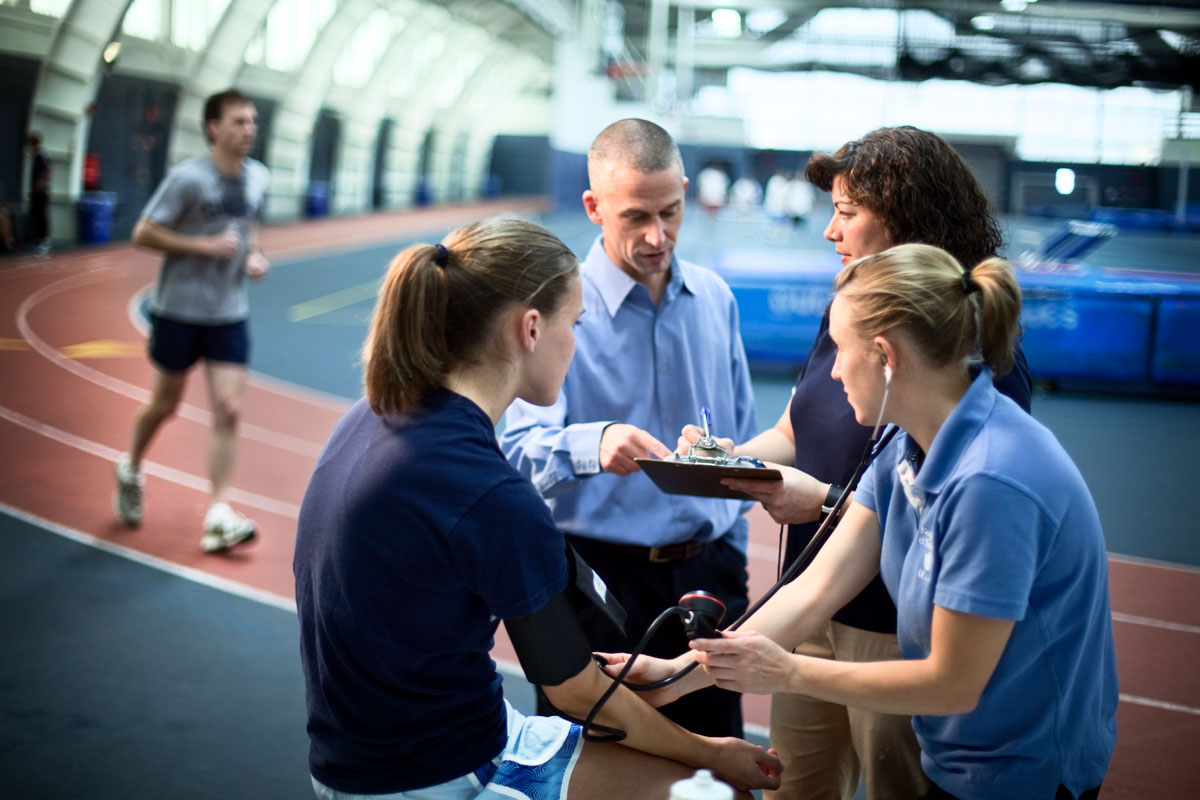
DOUG CASA’S STORY…
The scholastic boys’ 10,000-meter run started in the late morning of a hot and humid day. On the final lap, the third-place runner began staggering. He collapsed just as he was coming into the turn. He stood up, took a few more strides, and then collapsed again. He was lying unconscious not more than a hundred meters from the finish line. His coaches quickly warned the physician and athletic trainer not to touch this 16-year-old athlete because he would be disqualified and lose his chance at a medal.
Ignoring the coaches’ request, they got the athlete to the nearby ambulance area, placed him in the shade, and put ice bags and wet towels on his neck, forehead, axilla, and groin areas while EMTs called the hospital.
“I have nearly no memory of approximately six hours of my life, while I was in a coma due to severe exertional heat stroke,” says Doug Casa. But “after being released from intensive care to a regular hospital room, I watched the local news at 11 p.m. and watched them tell the story of my exertional heat stroke. It was powerful to lie alone (Buffalo was 10 hours from my house on Long Island) in a hospital room — utterly exhausted yet peacefully thankful — and watch a news account about myself.
“On August 8, 1985, somewhere between 11 and 11:10 p.m. EST, the path of my life unfurled in front of me. For all the years since then, I have been on a quest to try to prevent and treat exertional heat stroke. My story is not overly complicated. My survival penance has been to save as many lives as possible from heat stroke and to prepare others who can do the same.”
Kent Scriber, professor of exercise and sport sciences at Ithaca College, was the athletic trainer who helped Casa that day. “I was impressed with Dr. Casa’s research long before I realized our paths had crossed years earlier,” says Scriber. “I still remain in awe of Dr. Casa’s passion for the work he does, and I am proud to know that my actions many years ago have been a catalyst for the work that he has done since then.”
Casa says his work with the Korey Stringer Institute is a way of “paying it forward.” The current work of KSI related to heat stroke and sudden death is enhancing the safety, not only of athletes of all ages and levels, but also of our country’s military, laborers, and anyone leading an active lifestyle.

Nice piece about Doug Casa’s work at UCONN. Having met Doug many years ago as a grad student, it is.good to see that his work is continuing to make sports safer. He seems to have the same passion that he had 20 years ago. With a daughter, who is studying to be an athletic trainer and as a former trainer, it is great to see the positive impact certified athletic trainer can have.